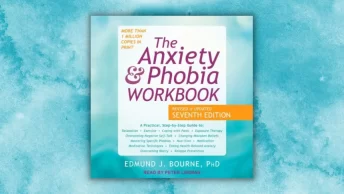Polyvagal Exercises for Safety and Connection PDF by Deb Dana, published by W. W. Norton in 2020. It has received positive reviews from readers and professionals in the field. It has been praised for its practical approach to applying the Polyvagal Theory in daily life and relationships, as well as its clear and accessible writing style.
The main themes of the book revolve around the Polyvagal Theory, which is a groundbreaking theory developed by Dr. Stephen Porges that explains how our autonomic nervous system responds to stress and trauma. The book focuses on providing practical exercises and techniques to regulate the nervous system, promote safety, and cultivate connection in order to heal from past trauma, manage stress, and improve relationships.
Polyvagal Exercises for Safety and Connection is available in various formats, including paperback, hardcover, pdf, and e-book. It is also available in audiobook format, narrated by the author Deb Dana, for those who prefer an auditory experience.
Table of Contents
About the Author
Deb Dana, the author of “Polyvagal Exercises for Safety and Connection PDF,” is a licensed clinical social worker and an internationally recognized expert on the Polyvagal Theory. She has over 30 years of experience working with individuals and groups, helping them understand and apply Polyvagal Theory to their lives.

Deb Dana is known for her expertise in the field of trauma and the nervous system. She has trained and consulted with therapists, educators, and other professionals around the world, providing insights and practical tools for working with trauma and promoting resilience. She has also contributed significantly to the advancement of the field of somatic psychology, which focuses on the integration of the mind and body in healing.
In addition to “Polyvagal Exercises for Safety and Connection,” Deb Dana is the author of “The Polyvagal Theory in Therapy” and co-editor, with Stephen Porges, of “Clinical Applications of the Polyvagal Theory.” She is highly regarded for her ability to translate complex concepts into accessible language and practical applications, making the Polyvagal Theory more understandable and applicable to a wider audience.
Deb Dana’s work is highly regarded by professionals in the fields of psychology, trauma therapy, and somatic therapy. She is known for her compassionate and trauma-informed approach to helping individuals heal from trauma and build resilience. Her work has made significant contributions to the understanding and application of the Polyvagal Theory in clinical practice, education, and personal growth.
Details of Polyvagal Exercises for Safety and Connection Book
| Book | Polyvagal Exercises for Safety and Connection |
| Author | Deb Dana |
| Original language | English |
| Originally published | 2020 |
| Category | Psychology |
| Publisher | W. W. Norton |
| Total Pages | 360 |
| Format | PDF, ePub |
Polyvagal Exercises for Safety and Connection PDF Free Download
Click on the button below to download a pdf file of the Polyvagal Exercises for Safety and Connection book online for free.
Multiple Languages Editions of Polyvagal Exercises for Safety and Connection Book
You can easily buy this book on popular platforms such as Amazon Kindle and Barnes & Noble Nook.
| Book Editions | Check Now |
|---|---|
| English | Check Price |
Summary
The book begins by introducing the concept of the Polyvagal Theory, which explains how our autonomic nervous system responds to stress and trauma. It provides a foundational understanding of the three branches of the nervous system – the ventral vagal, sympathetic, and dorsal vagal – and their roles in our physiological responses to different situations.
Deb Dana then delves into the practical applications of the Polyvagal Theory, offering a variety of exercises and techniques that can be used in daily life to regulate the nervous system and promote a sense of safety. These exercises include breathing techniques, grounding exercises, self-soothing techniques, and ways to engage the social engagement system, which is associated with positive connections and relationships.
The book also addresses the impact of trauma on the nervous system and provides exercises for healing from past trauma. Deb Dana emphasizes the importance of creating a sense of safety in the body and mind as a foundation for trauma healing and provides practical tools for managing triggers, calming the nervous system, and building resilience.
Throughout the book, Deb Dana emphasizes the importance of connection and relationships in regulating the nervous system and promoting overall well-being. She provides exercises for cultivating connections with others, improving communication skills, and fostering healthy relationships.
The book concludes with a summary of key concepts and practical tips for integrating the exercises into daily life. It also includes additional resources for further exploration of the Polyvagal Theory and its applications.
Similar Books to Polyvagal Exercises for Safety and Connection Book
- The Polyvagal Theory in Therapy by Stephen W. Porges
- The Body Keeps the Score: Brain, Mind, and Body in the Healing of Trauma by Bessel van der Kolk
- Nurturing Resilience: Helping Clients Move Forward from Developmental Trauma by Kathy L. Kain and Stephen J. Terrell
- The Body Never Lies by Alice Miller
- Polyvagal Theory in Practice: A Therapy for Traumatic Stress and Dissociation by Janina Fisher
- Trauma and the Body: A Sensorimotor Approach to Psychotherapy by Pat Ogden
- The Pocket Guide to the Polyvagal Theory: The Transformative Power of Feeling Safe by Stephen W. Porges
- The Polyvagal Theory: Neurophysiological Foundations of Emotions, Attachment, Communication, and Self-regulation by Stephen W. Porges
- Befriending Your Nervous System: Looking Through the Lens of Polyvagal Theory by Deborah A. Dana
FAQs(Frequently Asked Questions)
What is the book Polyvagal Exercises for Safety and Connection about?
The book explores practical exercises based on polyvagal theory to promote safety and connection by regulating the autonomic nervous system.
Is Polyvagal Exercises for Safety and Connection book worth reading?
Yes, it has received positive reviews for its practical exercises and accessible writing style, making it worth considering for those interested in polyvagal theory and self-regulation.
Is Polyvagal Exercises for Safety and Connection book hard to read?
The book is generally well-received for its clarity, making it accessible to a wide range of readers. However, individual reading experiences may vary.
How long does it take to read the Polyvagal Exercises for Safety and Connection book?
The reading time may vary based on individual reading speed and engagement. It’s best to refer to the book’s page count or estimated reading time provided by the publisher or online platforms.







